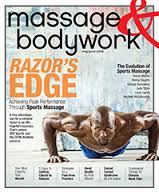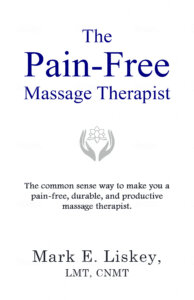Every massage therapist has asked: How much do I charge for a massage? The short answer is you probably can’t go wrong if you stay close to the price of your top 2 to 3 competitors. But there are variables and pricing strategies you should consider before making a final decision.
Before we start talking about strategies, let’s address the emotional battle that may be going on inside your head. On a bad day you might be thinking that you’re not worth as much as other massage therapists are charging, and on a good day you might be thinking you’re worth a lot more than everyone else.
The Emotional Side of Setting Your Massage Rate
In addition to the emotional battle, there’s also the reality piece: How much is someone actually going to pay for a massage?
These feelings and thoughts are normal. But don’t let them stymie you and settle on a price by default. Here are some suggestions that I think can help you out.
Self-Evaluation: Understanding Your Value
First, how would you rate your massage? This is a loaded question because it’s difficult to do a self-evaluation without bringing in emotional baggage, like “my massage is never good enough.”
Here’s a way to evaluate your massage and leave the baggage at the door. Ask yourself: Do clients come back to me? Do they compliment me?
Client Feedback: A Guide to Self-Confidence
If you’re working in a place with other massage therapists, are you holding your own in terms of getting clients?
My guess is that your massage is good to go, but that you have normal self-doubt. However, if you think your massage needs tweaking, check out New Therapist Can Be Good Therapists.
Research Your Local Market for Comparable Rates
Next you need comparables. What are other MTs in a 5-ish mile radius from you (the place where you’re going to see clients) charging for massage?
To answer this question, find 2 or 3 MTs or massage businesses as comparables—but be selective. You want to compare apples to apples.
How to Choose Relevant Competitors
For instance, if you’re currently working in a spa setting and are going to see clients in a room in your house, then you shouldn’t use a spa in your 5 mile radius as a comparable. People coming to a spa are not only paying for the massage, they’re also paying for the spa atmosphere and wouldn’t pay that price to get a massage in a room in your house.
However, a franchise massage spa, such as Massage Envy or Hand & Stone, might be a fair comparison. Why? Because a franchise massage spa makes money in volume which means they charge lower prices than non-franchise spas in order to drive more people through the door.
Pricing Strategies for Massage Therapists
Undercut Strategy: Pros and Cons of Starting Low
Once you’ve got your comparables, you’ll have a price range. Let’s say MT 1 charges $70 , MT 2 $80 and MT3 $70. The price range is $70 – $80. Where should you fall in?
This is the challenging part.
Instinct may tell you to price low, maybe even below the lowest price in the range. For instance, with the $70 – $80 comparables price range, you might think that $60 would be a good price point to get people in the door. Then over time you would raise the price.
If you’re going to try this strategy, only do it for a short period of time and only for clients who will follow you from your current job to your practice.
I say this because I used this strategy when I started my first practice. Yes, it did help me establish a core client base so that I could make it on my own. However, some of those original clients are still not up to my current massage rate.
If you know that you’ll have a hard time raising the price over time, just avoid this strategy completely.
High Price Strategy: When to Set Higher Rates
The opposite approach to undercutting would be to price your massage off the high-end of price range scale. For example, if the comparables price range is between $70 and $80, a high price strategy would be to price your massage at $85.
This strategy is more often employed by established MTs who know their market. If you’re just starting out, I wouldn’t recommend this strategy unless you have access to people who can pay that price.
Here’s what I mean: Let’s say you’ve worked at local spa for a year and you’ve developed a following. One of the clients, Nefri, who loves you is also your biggest promoter. Nefri has talked you up to her friends and some come to see you at the spa.
Your plan is to rent a studio and start your own massage practice. You do your research and find that your competitors are charging $75 – $80 for a 60 minute massage. The spa charges $100 for a 60 minute massage.
When you tell Nefri that you’ll be leaving the spa to do massages in a studio, she wants to follow you. You suspect that most of her friends who see you at the spa will follow you, too.
Banking on Nefri and her friends following you (they are used to paying a higher price) and counting on them as referral sources (they can provide an on-going source of people who can afford the higher price), this would be a time where you could price your massage higher than your competitors.
Putting it in numbers, it might looks like this: at the spa, Nefri pays $100 for a 60 minute massage and gives you a $20 tip. Her out-the-door cost is $120.
The top end of your comparables price range is $80. If you charge Nefri $85 and she still gives you a $20 tip, her out-the-door cost will be $105.
You would be making $5 more per massage than your highest priced competitor and Nefri would be paying $15 less than if she went to the spa, which makes up for the fact that you can’t provide the total spa atmosphere.
In-The-Range Pricing: Staying Competitive
Personally, I prefer to stay within the comparables price range. Here’s why: Let’s say I work at chiropractor’s office. She charges $75 for an hour massage and my comparables price range if I were to go out on my own is $70 – $80.
I have a few clients on the side, but I’m nervous that I’m not going to have enough clients when I start to rent space. I know that if undercut and charge $55, I’m in a position of never getting paid enough going forward.
Solution: I price my massage at $75, right in the middle of the price range, and offer an intro massage price at $45.
This strategy has worked well in our most recent massage business for 3 reasons:
- The intro pricing is a nice way to say thank you to the people who are going to follow you.
- The intro pricing is hard to resist for people who are on the bubble about following you.
- It’s a great way to get your hands on (literally) future clients and sell your massage through your hands.
Cheat Sheet: Choosing the Right Massage Pricing Strategy
Here are the Cliff’s Notes for pricing your massage.
- Only price your massage under the low end of the comparable range for a short time (e.g., until you have a base that pays for your massage expenses) and only with clients who are going to follow you.
- Only price your massage above the high end of the comparable range when you have access to clients who will pay that rate.
- You probably can’t go wrong with pricing your massage within the comparable price range and offering a one-time, intro discount price.
Setting Your Massage Rate with Confidence
Cheat Sheet: Choosing the Right Massage Pricing Strategy
Here’s a quick summary of massage pricing tips:
- Undercut Strategy: Use sparingly for new clients only. Look for ways to save money on massage insurance, a website and renting a room until you can get to your ideal price.
- High Price Strategy: Ideal if you have clients willing to pay premium prices.
- In-The-Range Pricing: Safe choice that aligns with competitor rates. Don’t let pricing your massage stop you from growing your business. Start within a comfortable range, then adjust as you build confidence and experience.
Need more help starting and/or growing your massage business?
Get my free course–Jumpstart.
It has everything you need to get your business moving in the right direction.
Save Money!
If you are looking to save money on massage insurance, check out my most recent article: Who has the Cheapest Massage Insurance. By the way, website don’t have to be expensive. In fact, if you build it yourself, you can save a lot of money and make changes immediately. Go here for that article: Cheap Website. Last, you can land a room to rent for cheap if you find the right person to rent from. Here’s how you do that: How to Rent a Massage Room for Cheap.
Questions? Email me at mark@makethemostofmassage.com. 🙂







Comments on this entry are closed.